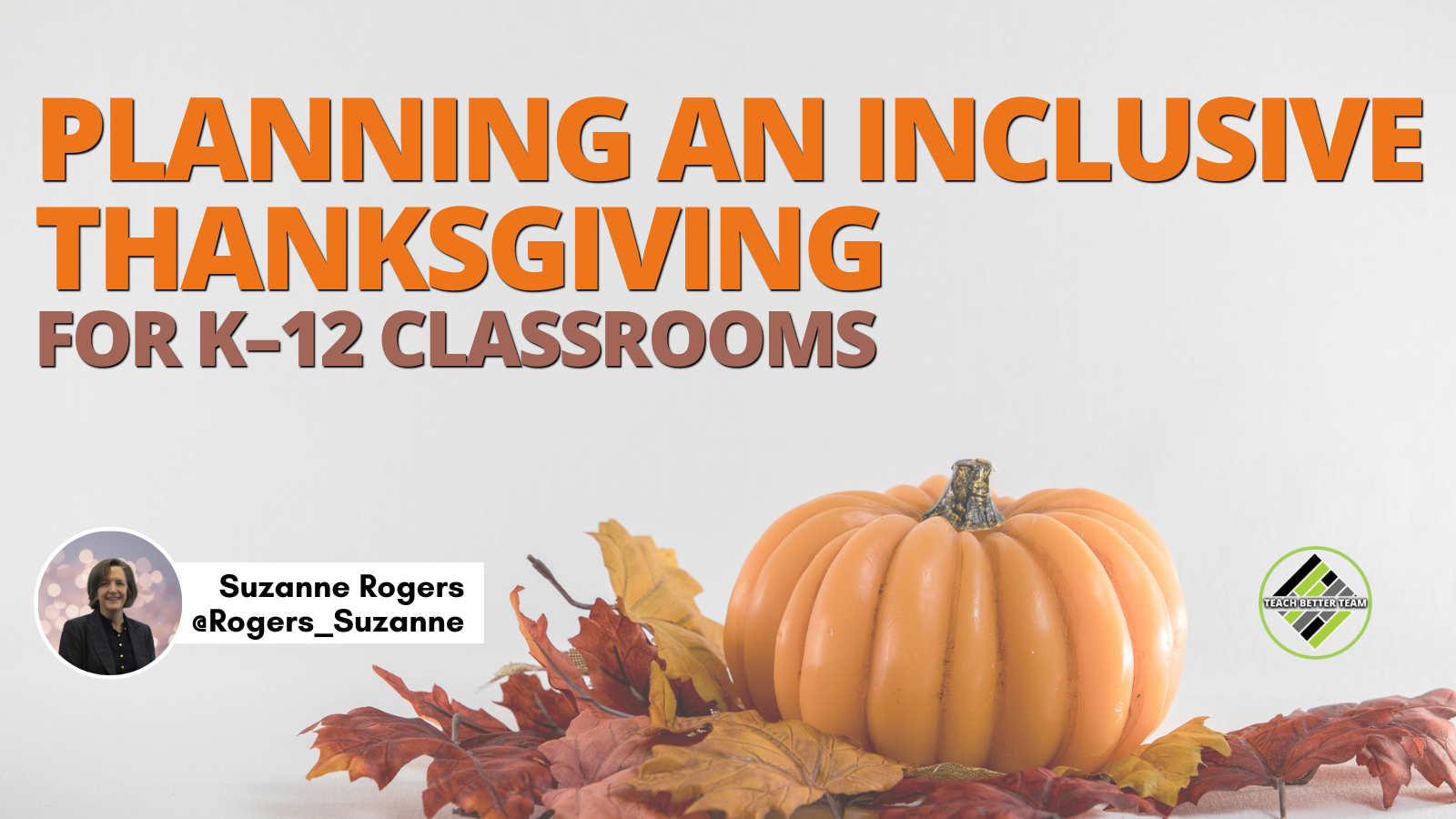Rethinking the story we tell
Thanksgiving, as it is commonly celebrated in the United States, carries a complex and often misunderstood history. Traditionally portrayed as a harmonious feast between Pilgrims and Native Americans, this narrative simplifies a much deeper story—one that reflects broader themes of colonization, resilience, and cultural misunderstanding.
The Wampanoag people, who aided the English settlers, had already been in contact with European explorers and traders long before the 1621 feast at Patuxet[1][2].
As educator Liz Kleinrock reminds us, understanding history requires recognizing that it’s not fixed but constantly evolving—shaped by many perspectives and lived experiences[3]. For many Indigenous peoples, Thanksgiving is not a day of celebration but a day of remembrance, reflecting the painful impacts of colonization and loss[4].
When teachers help students see Thanksgiving through multiple perspectives, they create more inclusive, authentic learning experiences that connect gratitude to empathy and historical truth.
Planning an inclusive Thanksgiving
Designing an inclusive Thanksgiving experience for K–12 students begins with intentionality. Educators can create a space where every student feels seen and respected by teaching with accuracy, empathy, and cultural awareness.
Educational resources that center Indigenous voices
Fortunately, educators have access to strong frameworks that reimagine Thanksgiving through a more inclusive lens.
The “Indigenous Wisdom” curriculum from the Indian Pueblo Cultural Center and Washington State’s “Since Time Immemorial” curriculum are excellent starting points for integrating Indigenous perspectives into classroom discussions[5].
Teachers can also connect with local Indigenous communities to invite guest speakers, storytellers, or authors who can share authentic experiences. These collaborations help students move beyond textbooks to encounter living cultures and contemporary voices [5].
[scroll down to keep reading]
Celebrating community and diversity
Thanksgiving celebrations can still center on togetherness and gratitude, without losing historical accuracy. Consider hosting a classroom feast where families share dishes from their own cultural traditions. This simple shift turns a one-dimensional holiday into a celebration of multiculturalism and belonging[6].
When students see their family stories and foods represented, they feel valued. And when they experience the richness of others’ traditions, they learn that gratitude is universal.
Creative classroom activities
Teachers can foster gratitude and reflection through interactive and creative activities.
Consider projects like “thankful thoughts” journals, “appreciation presentations”, or “community quilts.” These invite students to express gratitude for people, places, and moments that matter most to them[7].
Educators can also incorporate music or art to deepen engagement; platforms like Chrome Music Lab offer opportunities to explore sound, rhythm, and creativity while reflecting on Thanksgiving themes [6].
Lesson plans that inspire critical thinking
Organizations like IllumiNative offer grade-level lesson plans connecting art, culture, and history, including studies of Native changemakers and their modern-day contributions[8].
The Oregon Department of Education also provides tribal history lessons adaptable for multiple grade levels. This ensures that Native voices and experiences are not limited to a single unit or holiday but are integrated throughout the year[6].
Connecting gratitude to service
Thanksgiving is also a time to act on gratitude. Community service projects allow students to understand gratitude through giving. Encouraging students to connect with organizations that support immigrants, refugees, or families in need can build empathy and global citizenship[9].
When students serve others, they see that gratitude isn’t just something we feel—it’s something we do.
Moving forward with empathy and understanding
By integrating diverse resources, amplifying Indigenous voices, and designing reflective, creative classroom experiences, educators can transform Thanksgiving into a celebration of understanding and inclusion.
When we teach students to honor multiple perspectives, we do more than revisit history—we build communities grounded in empathy, gratitude, and respect.
TeachBetter takeaway
Inclusive teaching starts with curiosity and courage.
As you plan your Thanksgiving lessons this year, ask: Whose stories are we telling, and whose are missing? Then take one step to bring more voices into your classroom.
Together, we can make gratitude an act of learning, empathy, and connection—every day of the year.
- https://www.novakeducation.com/blog/teaching-the-history-of-thanksgiving-with-equity
- https://americanindian.si.edu/nk360/informational/rethinking-thanksgiving
- https://www.edutopia.org/article/culturally-responsive-ways-to-teach-thanksgiving/
- https://inclusion.msu.edu/news/thanksgiving-a-complex-tradition.html
- https://www.k12dive.com/news/3-ways-to-expand-native-american-curriculum-beyond-thanksgiving-myths/566547/
- https://notsowimpyteacher.com/2022/11/how-to-celebrate-thanksgiving-mindfully-in-the-classroom.html?srsltid=AfmBOoqHqQVvQjXyupTXjSsnTHXP5KPFXELImpihcl8o_q9krdLLmTfb
- https://www.niea.org/virtual-resources-for-parents-and-teachers
- https://www.pbssocal.org/education/talking-to-kids-about-thanksgiving-center-truth-connection-and-being-grateful
- https://askatechteacher.com/thanksgiving-activities-3/
About Suzanne Rogers
Suzanne M. Rogers is an accomplished, passionate, technology-inspired educator, experienced conference presenter, and yoga enthusiast. She is the Assistant Director of Public Relations at LISA Academy Public Charter Schools. In addition to her 20 years of work in education, Suzanne also serves on the Arkansas Museum of Fine Arts Educator Advisory Board, the UCA Executive Advisory Board, the UCA MAT Program Advisory Board, and the SAU ERZ Advisory.
Suzanne’s passion for education and her community is evident in her involvement in these organizations, where she works tirelessly to support students and educators. As an #ArmyMom and former #AFbrat, Suzanne brings a unique perspective to her work, understanding firsthand the sacrifices made by military families. Suzanne exemplifies dedication, expertise, and commitment to excellence.



